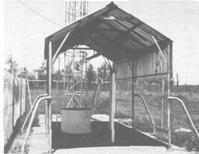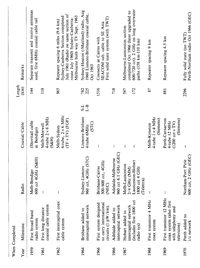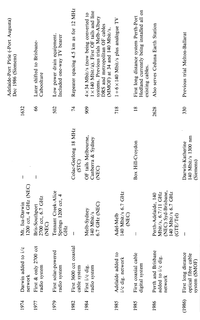


Chapter 8
I Part 1: Communications
i Before the Telegraph
ii Electrical Communication Before Federation
iii Federation to the End of the Second World War
iv Post-war and on to 1975
v 1975 ONWARDS
II Epilogue
III Part 2: Early Australian Computers And Computing
IV Acknowledgements
References
Index
Search
Help
Contact us

Post-war and on to 1975 (continued)
Despite the reduction in the number of manually switched calls, there was a requirement for a limited number of new manual exchanges arising from the obsolescence of much existing equipment and the policy of concentrating manual assistance, as it became known, into a small number of centres for economy of operation. LME offered an AFG exchange integrated with the ARM and several were installed and gave satisfactory service. For centres where there was no ARM, the APO designed two-cord four-wire switchboards, known as AFM 401 and 402, the first a modified sleeve control exchange and the latter a more ambitious project developed for Headquarters by F. Scott in Queensland which included service assessment, directory information and other ancillary functions.As the rapid growth in trunk traffic began to outstrip the limits of ARM exchanges in the capital cities, it became necessary to look to the next generation of trunk exchanges using Stored Programme Control (SPC). Tenders were called in 1968 and an offer by STC Australia was accepted for an SPC exchange, designated 10C, designed by another member of the ITT group, the Bell Telephone Manufacturing Co. (BTM) of Belgium. A team of ten APO engineers under the leadership of J. O'Dwyer were resident in Belgium over the next three years, assisting BTM in the design of the software to provide Australia's required facilities, while STC was extensively involved in technology transfer before the first exchange was in service in Sydney in 1973. The system then extended progressively to other capitals.
Television came to Australia in 1956, somewhat later than in other technically advanced countries but then expanded rapidly with a million licensed receivers within three years, giving a stimulus to the Australian manufacturing industry. The first full-time long distance relay facility was provided in 1962, from Sydney to Canberra and in the following year a Sydney-Melbourne bearer was provided over the recently completed coaxial cable. Microwave radio systems were, however, to be the main method of TV relaying and a network was rapidly established to meet the combination of TV relaying and rapidly expanding telecommunications needs influenced by the move to STD.
National Television availability was developed through seven stages, beginning in Sydney and Melbourne and extending through other capitals and provincial centres until in stage seven, the practical limit was reached of using terrestrial methods for programme relaying. This stage used novel low cost techniques for programme relaying and very cost-effective transmission station designs. Sebire[42] has given an account of the approaches taken, including the provision of underground equipment shelters to provide satisfactory temperature conditions in areas such as Western Queensland.

Generally, however, the broadband network developed along conventional lines and was based on overseas technology, but with a range of local initiatives and developments. Early systems were fully imported, but beginning around 1970 channelling, multiplexing and line transmission equipment were all developed and manufactured in Australia. While based on European fundamental designs, they were modified to accord with Australian standard practices, to provide standard test conditions and uniform approach to maintenance. Siemens and STC were the major firms involved. Table 6 sets out milestones in the development of the Australian Broadband communication network.

Legend: S&H Siemens & Halske, STC Standard Telephones & Cables, GEC General Electric Company, NEC Nippon Electron Company, Tel Telettra, FGF Felton & Guilleaume Fernmeldean lagen, MM Magneti Marelli, GTE General Telephone & Electronics

Organisations in Australian Science at Work - Australian Broadband Communications Network; Automatic Network and Switching Objectives (A.N.S.O.) Committee; Siemens (Australia) Ltd; Standard Telephones and Cables (S.T.C.)
People in Bright Sparcs - O'Dwyer, J.; Scott, F.; Sebire, L.
 |
Australian Academy of Technological Sciences and Engineering |  |
© 1988 Print Edition pages 582 - 583, Online Edition 2000
Published by Australian Science and Technology Heritage Centre, using the Web Academic Resource Publisher
http://www.austehc.unimelb.edu.au/tia/563.html